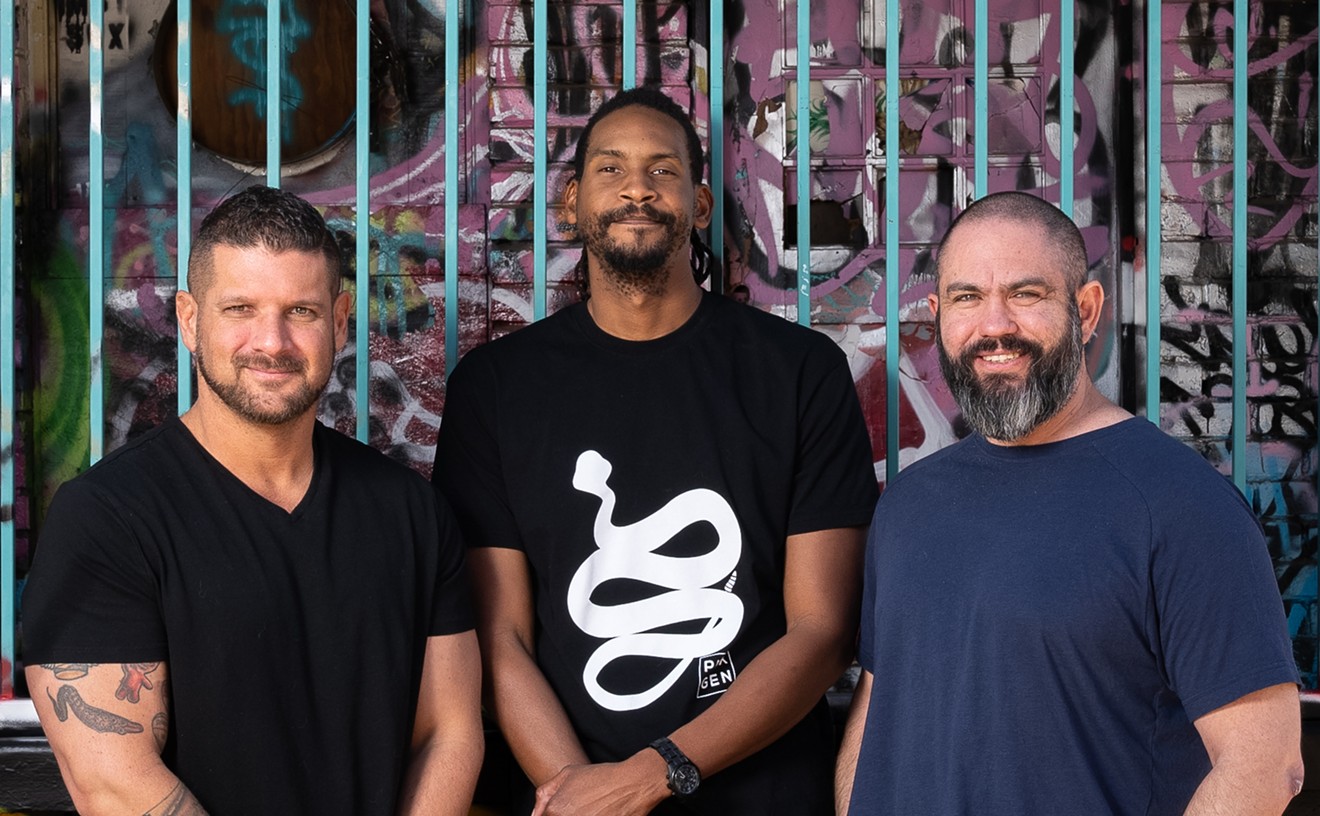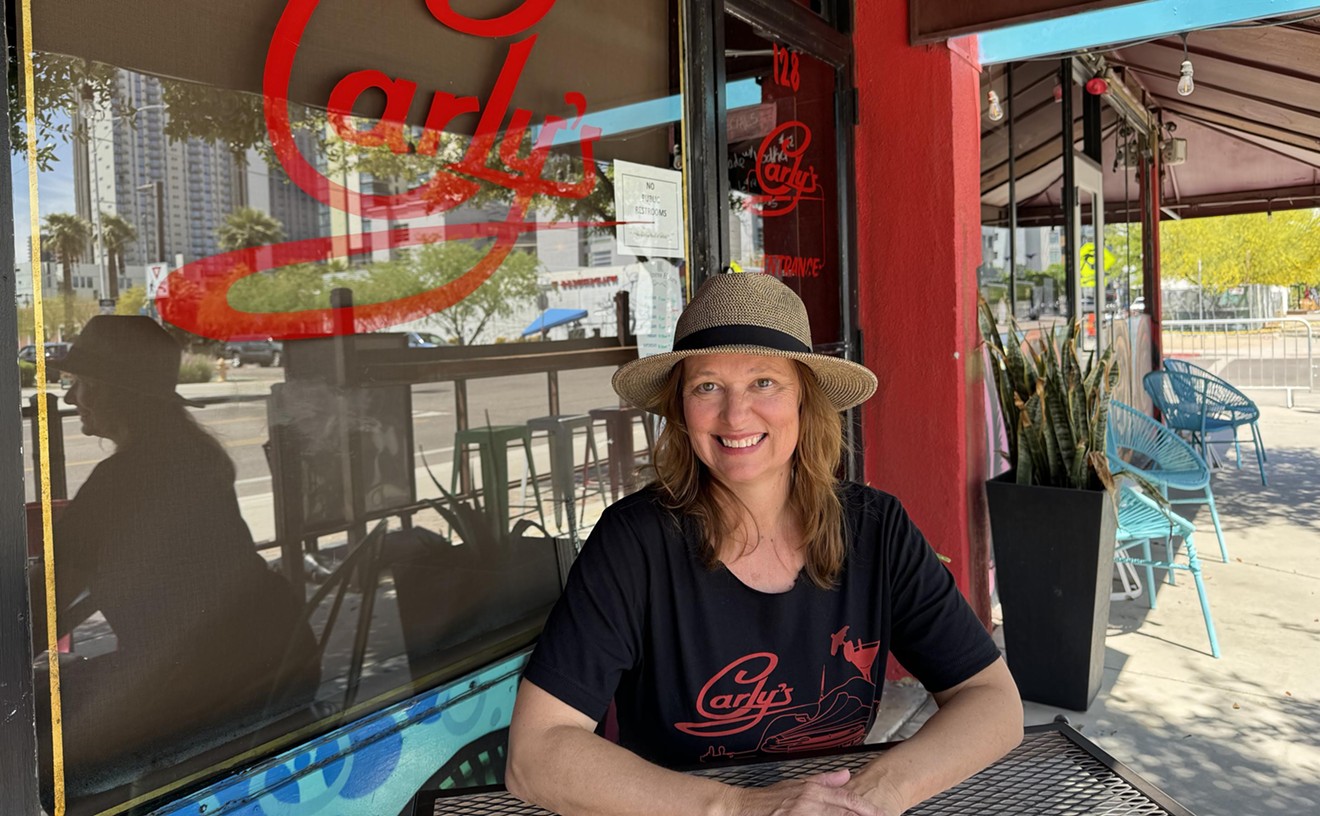Yet I was more interested in seeing how much chocolate I could sneak to the Koi in the garden ponds without making the fish sick, collecting Hello Kitty paraphernalia and eating hot dogs (plain) at the American Club coffee shop.
Even years later, after moving to the Arizona desert, I didn't understand what I had tossed away. I began to appreciate Japanese food more, feasting on tonkatsu, udon and sashimi at Osome, what I believe was the Valley's first Japanese restaurant. It was in an odd neighborhood, at Seventh Avenue and Osborn, but endearingly authentic, with its elegant tatami floors, traditional low-slung tables and a policy of requiring guests to remove their shoes. The food was marvelous, but so readily accessible that I took it for granted.
Over the next few years, I made several return visits to the Land of the Rising Sun, and, taken under the wing of a very kind Tokyo family, finally discovered the breathless magic that is true Japanese food. They delighted in exposing me to their edible secrets, laughing at my grimaces (squid on a stick?), glowing with pride when my face lit up in undeniable pleasure. Every day was a whirlwind of ecstasy: baby eels plucked from a tank and swallowed live, bittersweet pickles taken with gelatinous rice, kushiyaki, buttery Kobe and endless discoveries of mysterious seafood, exotic vegetables and snatched-from-Eden fruits.
And so it was that when Osome shut down in the mid-1980s, I finally took a good look around me, suddenly realizing how very alone I was in our Valley of the Sun. We had Ayako and Tokyo Express, but those were pretty much our only choices, and Americanized teppanyaki or fast food, no matter how nicely done, simply doesn't deliver the absolute Japanese experience.
Flash forward to the late '90s. The Valley had awakened, its landscape strewn with Japanese restaurants. Asian dining thrived even in former culinary no man's lands like Gilbert and west Phoenix. Many were, and continue to be, quite excellent (some of my favorites include Sushi on Shea, Hiro Sushi and Yamakasa). Yet, there wasn't one restaurant that sang to me in that classic Oriental voice of simplicity, pure goodness and energy.
Now it's 2000. And though it's taken almost 20 years of waiting, I've finally found my Japanese utopia in the Valley. I've discovered Hapa Sushi Lounge, opened almost a year ago as a side room to Restaurant Hapa, which has received critical acclaim for its innovative Pacific Rim-influenced fare.
Why has it taken so long for me to visit? In truth, I had imagined the lounge to be a mere adjunct to Restaurant Hapa (the whole thing's housed in a strip mall), assuming that chef-owners James and Stacey McDevitt would pour their passion into their primary dining room. Besides, as ever in this town, sushi is sushi is sushi.
It took a trip last month to Nobu in New York, in fact, to inspire my Hapa visit. A partnership of actor Robert De Niro and world-renowned chef Nobuyuki Matsuhisa, Nobu is considered to be America's premier experience for Japanese dining. In my book, it is. After indulging in omakase (a multicourse chef's choice dinner) that brought such luxuries as tuna tartare with caviar in wasabi broth and buttery seared whitefish with soy and citrus on toasted nori, I knew I needed to find something similar in the Valley.
I'm very proud of Hapa Sushi Lounge -- it competes head-on with Nobu and, to my recollection, many better Japanese restaurants. It also costs plenty -- completing the entire omakase at Hapa runs me a staggering $132 per person before tax and tip. Oh, but it's worth it.
Ironically, my favorite dining adventure at Hapa Sushi involves virtually no sushi. As traditionalists like to point out, sushi actually is the sweetened vinegar rice that is a base for fish and veggie rolls. And, in fact, through my 10-course chef's tasting, there's only a single dish containing any rice. And unlike any other sushi experience I've enjoyed, this progressive dinner pairs plates with wine, sake, sparkling wine and champagne.
Note: Diners can order individual items off Hapa Sushi's compact menu (sans alcohol), and can even break the multicourse dinners into segments -- I split mine over two visits. The only thing that chef Nobu Fukuda asks is that diners not jump around on his menu -- selections complement each other in ascending order. Also, be aware that Hapa Sushi's printed menu is a guide; Fukuda substitutes ingredients and wines for daily availability, and some listed courses may not be available at all.
Plan to spend some time in the comfortable, green-tea colored lounge. Navigating the tasting takes a couple of hours.
Dinner begins with a bang. Think you've had really wonderful oysters? Likely you have, but before you declare a winner, you must try Hapa's first course of a trio of Washington State oysters. Served in-shell on a long sushi-style tray, these beauties are wild tricks of subtle character -- firm and with an absolutely intense, sophisticated, full flavor. They are served hot, in a sauce of sake, soy, grape seed oil and chives; and cold as palate refreshers, in varying baths of ponzu, spicy daikon and green onion or lime and chile.
Fukuda grins slyly as he pours our accompanying sake: It's supposed to be Kurosawa Daiginjo, but he's treating us to a sake so special that he's not even supposed to show us the label, he says. The "secret" rice wine is available only to restaurants passing a stringent menu review by the distributor, he explains proudly, and for some odd reason (hype?) the purveyor doesn't allow the bottle to be displayed. It is fabulous, actually, served properly cold and luminous with a clean, melon tone.
Our next course brings a spellbinding tuna tataki, alternating slivers of flash-seared ahi and poached albacore in a pool of sesame oil, pinot noir, puréed onion and soy. I love this snack and have never had it prepared better. The ahi is rosy pink in the middle, and both tunas are impossibly silky. Tucked with a forkful of organic Japanese baby spinach, the dish is absolute bliss. The Roederer Estate champagne served alongside is genius -- crisp, bubbly and rich enough to handle the fishes' heady onion sauce.
A third course of tuna tartare is anything but redundant, delivering six little train cars of blue fin tuna minced with garlic, soy sauce, pine nuts and tiny dicings of Fuji apple, cucumber and avocado. Perched on feather-light strips of lotus chip, the glorious mix melds beautifully with its accompanying soft Billecart-Salmon French champagne.
Geoduck (jumbo clam) is not available this evening, Fukuda apologizes, but he substitutes New Zealand red snapper to our undiminished joy. Translucent spirals of fish circle a ramekin of green tea salt and yuzu (sour Japanese fruit) that explodes with citrus. We dip tiny pieces, the snapper dissolves on our tongues and we finish with sips of Sancerre sauvignon blanc 1998, a crisp, citrusy wine.
Here, Fukuda pauses. He has been a bit generous with his pourings (usually two to three ounces each), and wonders whether we may be getting lightheaded. Oh, we are, I promise him, but the alcohol has little to do with our giddiness. It's the food, the comfortable atmosphere, the memories of my misspent childhood that have my head in the clouds.
And we're not even halfway through. Ankimo is a smooth, pâté-like terrine of monkfish liver layered with avocado in dueling sauces of shiso oil, balsamic vinegar reduction and citrus. It's the only dish that fails to impress me, primarily because I find the pâté and avocado pairing overwhelmingly mushy, and the Reinhold Haart '98 German Riesling served with it a bit too fruity. It's simply too heavy a creation for my taste.
By our sixth course, we are understandably slowing down. We persevere, though, bravely tackling hirame aburashimozukuri. Fluke is substituted for the menu-standard East Coast halibut, again with no complaints from us. The firm fish is thinly sliced and seasoned in a slightly bitter blend of chive, ginger, sesame seed and yuzu juice, then poached in soy and hot olive oil. Its partner, a Mason Cellars sauvignon blanc, is stronger than what I would expect to find with this dainty meal.
As Fukuda brings out yaki kinoko, my companion and I lay down our chopsticks in defeat. Any more, and the sensual flavors will be lost under our gluttony. Yet, as he tears open a brown paper bag, releasing the scents of Japanese mushrooms (enoki, shimeji and shiitake, to name a few) baked with sake, soy and garlic butter, we give in. I adore the slippery, juicy fungi, perfectly paired with a rich and fruity Sanford Pinot Noir.
Returning several days later, having fasted and now furiously hungry, I lay myself once again at the mercy of Fukuda. And he delivers, rewarding me with perhaps the most decadent creature I've ever had the privilege to eat. Uni sashimi sounds simple enough; the sea urchin is available on almost every sushi menu in town. But I guarantee you've never had uni such as this -- flown in fresh from Santa Barbara, served absolutely plain and perfect. Cold, soft and nutty sweet, it's served with Cristom '98, a big pinot noir from Oregon, and has haunted my dreams ever since.
Some "sushi," such as Fukuda's mushroom dish, doesn't even include fish. Kamo, for example, is a beautiful fan of pan-seared and poached duck breast, sliced thin and served cold in reduction of ginger red wine soy and duck juices. It's as rich and familiar as any entree served at high-end restaurants around town, especially when coupled with a berry-toned Karly '98 zinfandel.
Breaking up the menu over two nights brings other benefits, too. Suddenly, Fukuda throws us a curve ball, setting before us an exquisite specimen of Canadian Valley foie gras, marinated in miso and wrapped in nori (seaweed) on top of sticky rice. It's not on the menu, but it's a decadent secret, and we are much the better for having been exposed to this salty sweet gem. It's served with the same self-confident Cristom as the uni.
Without splitting up the menu, too, I doubt that even the most dedicated gourmet would still be standing by Hapa's regular 10th course. It's worth the effort though, with an exotic blend of barbecued eel and avocado layered with sushi rice on a pool of port wine, honey and soy. It's almost a dessert fish, cloying and sugary, and further sweetened by a glass of port wine served alongside. I'm not sure I like the fruity finish, but the dish's weird textures certainly appeal.
I've never seen Hapa's optional ending course served in a sushi restaurant, either, but I must admit that Fukuda's cheese selection makes an intriguing finale. Slender slices of Italian Pecorino Romano paired with ruby-red quince paste is a salty-aromatic combination. And here is where we enjoy the Kurosawa Daiginjo sake promised with our oysters. The drink, even spoiled by our initial treat of "mystery" sake, is wonderfully smooth -- and the perfect wrap-up to a marvelous feast.
While I can't turn back the clock and celebrate my youth as I should have, I can-- and will make up for lost time with Hapa Sushi Lounge.










